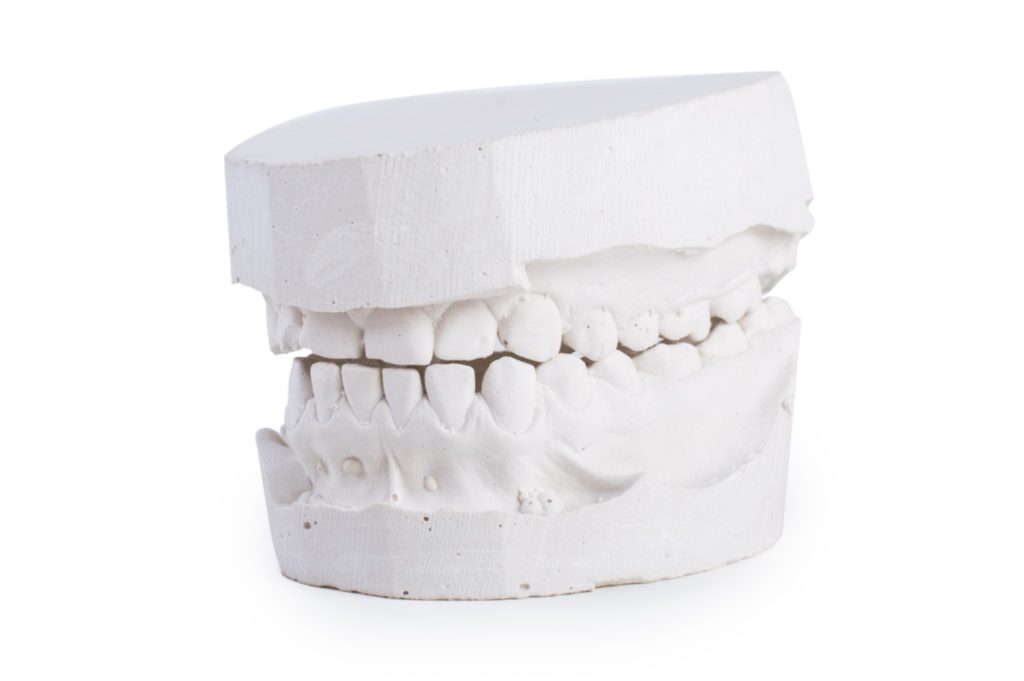When you think about braces, aligners, retainers, and the desire millions of people have every year to improve their smile, you may think it’s a fairly modern trend. However, humans have been trying to straighten smiles and align the teeth and jaws for thousands of years! We know that primitive versions of orthodontics existed because archaeologists have discovered mummies with bands on their teeth, and ancient Greek philosophers wrote down their thoughts on the best way to move teeth into better positions. Braces today are cuter and more comfortable than ever before, but even the older, bulkier models sound better than the first attempts at braces, which used materials like catgut or crude metal.
Orthodontic treatment today means choosing from several options, from traditional braces to Invisalign clear aligners, but in Medieval times, patients didn’t have much of a choice beyond extractions and blood-letting. The shiny brackets and colorful bands modern orthodontics offer doesn’t seem so bad when you’re comparing them to animal innards, dirty wire, and leeches! Here at Seabreeze Orthodontics, we use the latest in orthodontic technique and cutting-edge technology to create beautiful smiles that last, but it can be fun to take a look back at where it all began! Let’s explore what went on in those first few centuries of trying to correct misaligned teeth and jaws, and how they led to modern orthodontics evolving into what it is today.
Going right back to the beginning
Mummies weren’t the only ones sporting ancient orthodontic gear. Greeks, Etruscans, and Romans were also in on those early days of orthodontic action. Besides inspiring the Hippocratic oath, the ancient Greek physician Hippocrates was the first to write about tooth irregularities, in about 400 B.C. The classical Greek philosopher Socrates described Etruscan women using gold bands to preserve the position of the teeth after death, and Roman writer Celsus took it to the next level when he actually recommended using fingers to push newly emerging teeth into the proper position. Unfortunately, this was before anyone realized how important it was to wash your hands regularly, so we’re not sure how sanitary this particular method would have been!
Breakthroughs in the 18th century
There was a pretty long lull in orthodontics after this initial period of exploration, and no real progress was made until the 18th century, when interest was reignited and resulted in a flurry of development. If progress is built on the trials and errors that came before it, there were certainly enough questionable advances during this time to bridge the way to modern orthodontics!
One of these advances was the bandeau, which the intrepid French dentist Pierre Fauchard wrote about using in 1728. This horseshoe-shaped piece of metal was placed outside the teeth, and string or wire was then used to tie the teeth to the arch. While it operated similarly to modern braces in that it relied on the steady pressure to move the teeth over time, the bandeau couldn’t be adjusted, and it made it very difficult to move individual teeth in different directions. Fauchard didn’t stop with the bandeau, either! He was also known for operating on patients with a set of forceps he called a “pelican.” This forcibly realigned the teeth, and Fauchard would then tie adjacent teeth to each other in order to hold them in place while they healed. Kind of makes our adjustment appointments look like a walk in the park, doesn’t it?
In spite of how basic it was, the bandeau stayed relevant until about 1819, when Christophe-François Delabarre developed the wire crib, heralding the birth of contemporary orthodontics. As the name implies, the crib was made of wires, usually metal, that had been bent and then soldered together to make a “cage” that fit tightly over and around the teeth. Strings or metal springs could then be attached and used to apply a constant force to teeth, slowly moving them into better positions. This worked in much the same way our current braces and aligners do, and the wire crib is viewed as the precursor to several of today’s appliances.
Edward Hartley Angle, who is considered by many to be the “Father of Modern Orthodontics,” was able to identify the true properties of malocclusions, or misalignments, of the teeth and jaws in about 1880. His influence is felt even today in the way orthodontic appliances continue to become increasingly effective.
Modern orthodontics finally make an appearance
The United States finally began to see significant orthodontic contributions in the early 1800’s. J.S. Gunnell invented the “occipital anchorage” in 1822, an early form of headgear that fastened to the jaw from the outside of the mouth and exerted gentle pressure on the teeth. The first classic book on dentistry was published in 1840. In “The Dental Art,” author Chapin A. Harris outlined a number of practices that were innovative for the time, such as soldering knobs on bands to assist with tooth rotation and applying gold caps to molars to open the dental bite. When Charles Goodyear invented vulcanized rubber in 1839, orthodontists were quick to realize its potential. Just a few years later, E.G. Tucker was the first American dentist to use rubber in orthodontic appliances.
Over the next century, dentists would continue to make enormous strides in understanding how the teeth and jaws work. However, braces themselves remained more or less unchanged during this time. Most were made from materials like gold, platinum, silver, steel, gum rubber, or vulcanite, but some early orthodontists would sometimes turn to ivory, zinc, copper, brass, or even wood instead. Up until the 1970s, orthodontists relied on winding wires around each individual tooth to anchor the brackets. At this point, dental adhesives were invented, and they were able to switch to sticking brackets to the surface of the teeth instead.
Around this same time, stainless steel began to replace gold and silver as the most popular choice for wires thanks to its shapeability. This significantly reduced the cost of braces, making them much more widely available. This is also about the time that the first orthodontic appliance to address aesthetics was developed. Lingual braces run along the inside of the teeth’s surfaces instead of being affixed to the outer surface, and are still a popular orthodontic option today.
From Socrates to Seabreeze Orthodontics
A look back at history shows us how humans have been striving for thousands of years to create healthy, functional smiles. Teeth and jaws that are aligned are just as important today as they were when bandeaus and pelicans were all the rage! Seabreeze Orthodontics is proud to continue such an established tradition of creating beautiful smiles that improve the oral health of our patients. For more information on how modern orthodontics can benefit your smile, get in touch with our Myrtle Beach office today to schedule a free consultation. We’ll help you find your smile’s place in history!


